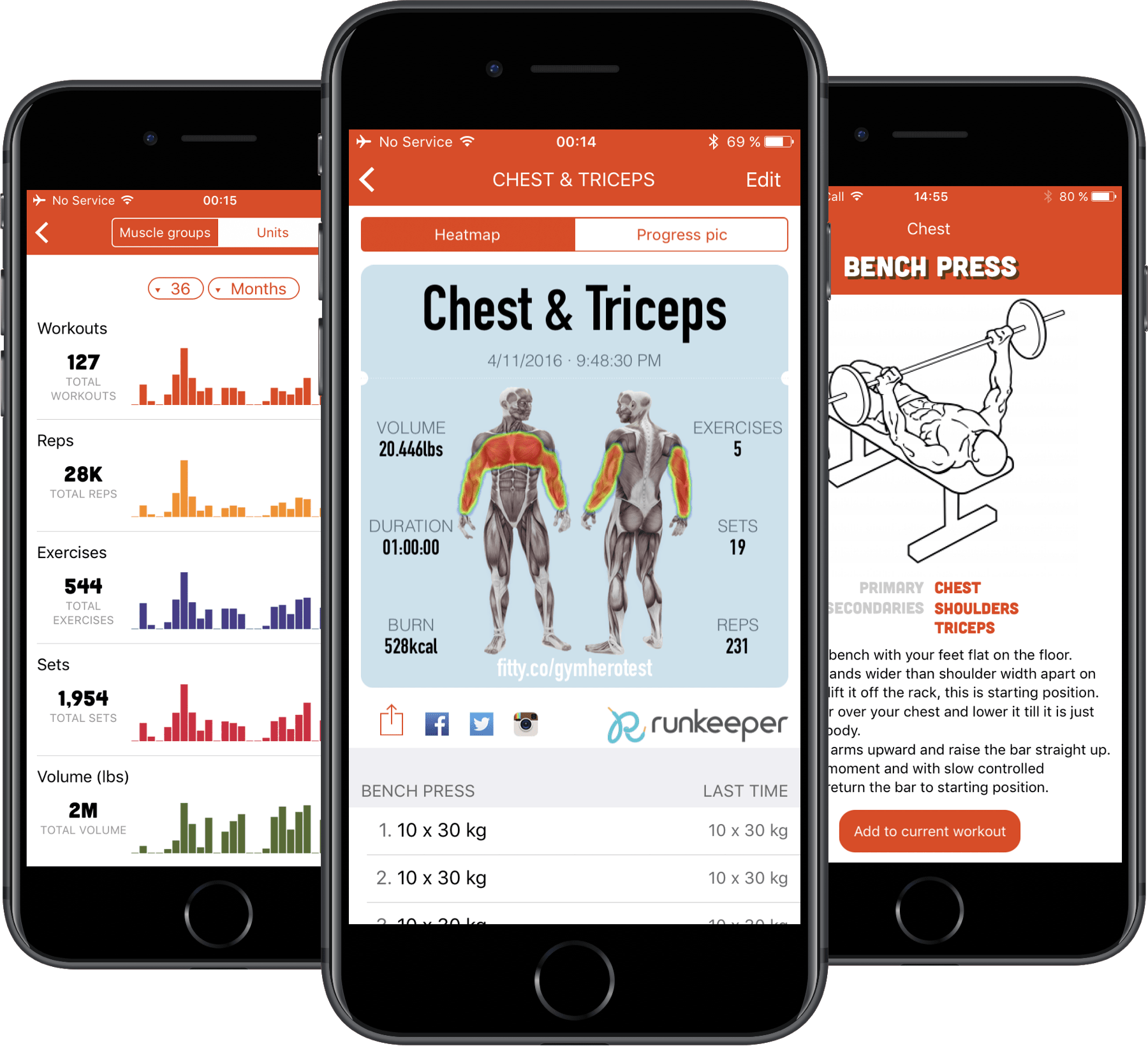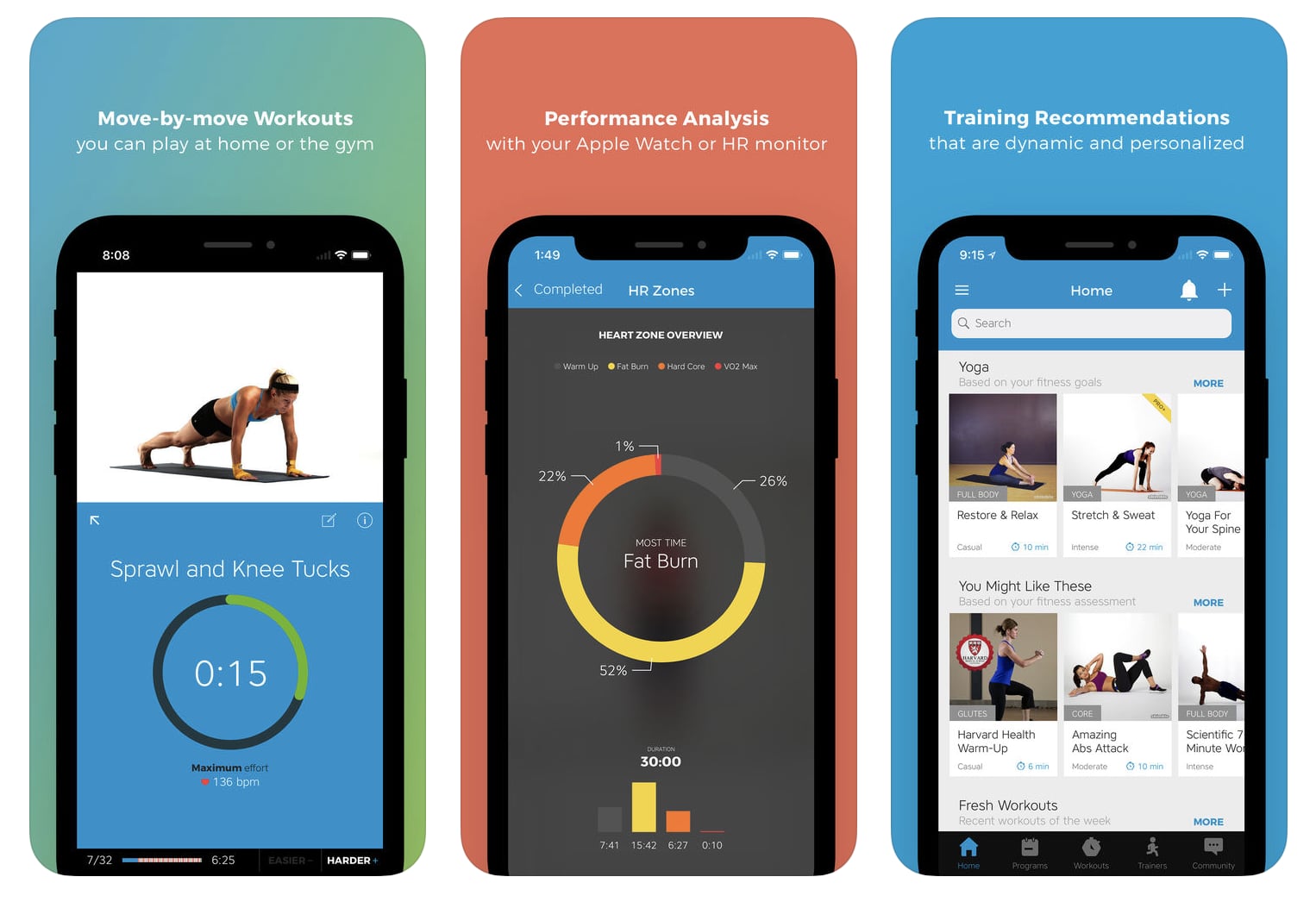Workout apps are revolutionizing the fitness industry, offering a personalized and convenient way to achieve your fitness goals. From beginners to seasoned athletes, these apps cater to all levels and provide a wealth of features to enhance your workout experience.
With their user-friendly interfaces, expert guidance, and advanced tracking capabilities, workout apps are the ultimate fitness companion. Whether you’re looking to lose weight, build muscle, or simply stay active, there’s an app out there to meet your needs.
Market Overview
The global workout apps market is experiencing a surge in growth, driven by the increasing popularity of fitness and healthy lifestyles. In 2022, the market was valued at $10.2 billion, and it is projected to reach $22.2 billion by 2027, exhibiting a CAGR of 15.2% during the forecast period.
Key Market Trends
- Rising demand for personalized fitness experiences
- Growing adoption of wearable fitness trackers
- Integration of artificial intelligence (AI) and machine learning (ML) for personalized recommendations
- Increasing focus on mental health and well-being through fitness
Major Market Players
- Nike
- Adidas
- Peloton
- lululemon
- Under Armour
User Demographics and Behavior

Workout apps cater to a diverse user base, ranging from fitness enthusiasts to individuals seeking to improve their overall well-being. Understanding their demographics and behavior is crucial for app developers to tailor their offerings and enhance user engagement.
Demographics
* Age:Workout app users typically fall within the age group of 18-45 years, with a significant portion being between 25-35 years old. This age group is generally more health-conscious and tech-savvy.
Gender
Both men and women use workout apps, but there is a slight skew towards male users.
Income
The income level of workout app users varies widely, with a significant portion belonging to the middle-income bracket.
Fitness Level
Users come from all fitness levels, including beginners, intermediate, and advanced individuals.
Behavior
* Frequency of Use:Most users access workout apps multiple times per week, with an average of 3-5 sessions.
Features
The most popular features include workout tracking, personalized training plans, and progress monitoring.
Interaction
Users interact with the apps primarily through touch and voice commands, often setting reminders and receiving notifications to stay motivated.
Motivations and Pain Points
* Motivators:Users are primarily motivated by the desire to improve their physical health, lose weight, and enhance their overall fitness.
Pain Points
Common pain points include a lack of motivation, difficulty in finding effective workouts, and the need for personalized guidance.
Monetization Strategies

Workout apps employ various monetization strategies to generate revenue. These strategies include subscription fees, in-app purchases, and advertising. Each strategy has its advantages and disadvantages, and the effectiveness of each depends on factors such as the target audience, app features, and market competition.
Subscription fees provide a recurring revenue stream for app developers. Users pay a monthly or annual fee to access the app’s premium features, such as personalized workout plans, exclusive content, and ad-free experiences. Subscription fees can be an effective way to generate stable revenue, but they may limit the app’s reach to users who are unwilling to pay for access.
In-App Purchases
In-app purchases allow users to purchase additional features or content within the app. These purchases can include new workout programs, equipment, or virtual goods. In-app purchases can be a lucrative revenue stream, especially for apps that offer a wide range of optional features.
However, it is important to carefully consider the pricing and value proposition of in-app purchases to avoid alienating users.
Advertising
Advertising is a common monetization strategy for free workout apps. Developers can display ads within the app or offer sponsored content to users. Advertising can be a cost-effective way to generate revenue, but it can also be intrusive and disruptive to the user experience.
To maximize revenue from advertising, developers should carefully select ad partners and ensure that ads are relevant to the app’s target audience.
The key factors that influence user willingness to pay for workout apps include the perceived value of the app, the quality of the content and features, and the price point. Users are more likely to pay for apps that offer unique and valuable features that meet their specific needs.
High-quality content and a user-friendly interface can also increase user willingness to pay. Finally, the price point should be competitive and aligned with the perceived value of the app.
User Experience and Design
User experience (UX) and design play a pivotal role in the success of workout apps. A well-designed app with an intuitive interface enhances user engagement and retention.
Ease of Use
Workout apps should be easy to navigate and understand, even for first-time users. Clear instructions, intuitive menus, and well-organized content ensure a seamless experience.
Visual Appeal
The visual design of workout apps is equally important. Vibrant colors, high-quality images, and aesthetically pleasing layouts create an engaging environment that motivates users.
Personalized Experience
Tailoring the app experience to individual users enhances satisfaction and loyalty. Personalized workout plans, progress tracking, and customized recommendations create a more engaging and motivating experience.
Competitive Landscape

The workout app market is highly competitive, with a number of key players vying for market share. These players include established fitness brands such as Nike and Adidas, as well as newer entrants such as Peloton and Strava. Each of these companies has its own strengths and weaknesses, and they compete on a variety of factors, including price, features, and user experience.
To better understand the competitive landscape, it is helpful to conduct a SWOT analysis of each of the key players. This analysis can help to identify the strengths, weaknesses, opportunities, and threats that each company faces.
Strengths
- Established brand with a loyal customer base
- Wide range of features and content
- Strong marketing and advertising presence
Weaknesses
- Higher price point than some competitors
- Lack of integration with other fitness devices
- Limited personalization options
Opportunities
- Growing demand for fitness and wellness
- Expansion into new markets
- Development of new features and technologies
Threats
- Competition from new entrants
- Changes in consumer preferences
- Economic downturn
Key Competitive Factors, Workout apps
The key competitive factors that differentiate workout apps from each other include:
- Price
- Features
- User experience
- Marketing and advertising
Future Trends: Workout Apps
The workout apps market is constantly evolving, with new trends emerging all the time. Some of the most important trends to watch in the coming years include the integration of artificial intelligence (AI) and virtual reality (VR).
AI can be used to personalize workouts, track progress, and provide feedback. VR can be used to create immersive workout experiences that are more engaging and motivating. These technologies have the potential to revolutionize the way people work out.
Artificial Intelligence (AI)
AI is already being used in a number of workout apps, and its use is only expected to grow in the future. AI can be used to:
- Personalize workouts based on individual goals, fitness levels, and preferences.
- Track progress and provide feedback on performance.
- Create personalized workout plans that adapt to changing needs.
Virtual Reality (VR)
VR is another emerging trend in the workout apps market. VR can be used to create immersive workout experiences that are more engaging and motivating than traditional workouts.
- VR can be used to simulate real-world workouts, such as running, cycling, and swimming.
- VR can also be used to create gamified workouts that make exercise more fun.
- VR can be used to provide a sense of community and support, which can help people stay motivated.
The integration of AI and VR into workout apps has the potential to revolutionize the way people work out. These technologies can make workouts more personalized, engaging, and motivating. As a result, workout apps are likely to become even more popular in the years to come.
Last Point
:max_bytes(150000):strip_icc()/WorkoutApps-7minute-5ae6f3b0c673350036d39725.jpg)
As the future of fitness continues to evolve, workout apps will play an increasingly vital role. With the integration of AI and VR, these apps will offer even more personalized and immersive experiences. By embracing the latest trends and adapting to the changing needs of users, workout apps will remain an essential tool for anyone looking to achieve their fitness aspirations.
FAQ Compilation
How do workout apps help me achieve my fitness goals?
Workout apps provide personalized workout plans, expert guidance, and advanced tracking features to help you stay motivated, monitor your progress, and maximize your results.
What are the key features of workout apps?
Workout apps offer a wide range of features, including workout tracking, progress monitoring, personalized workout plans, expert guidance, and community support.
How do workout apps make fitness more convenient?
Workout apps allow you to work out anytime, anywhere, without the need for expensive gym memberships or equipment. They provide a convenient and flexible way to fit fitness into your busy schedule.
